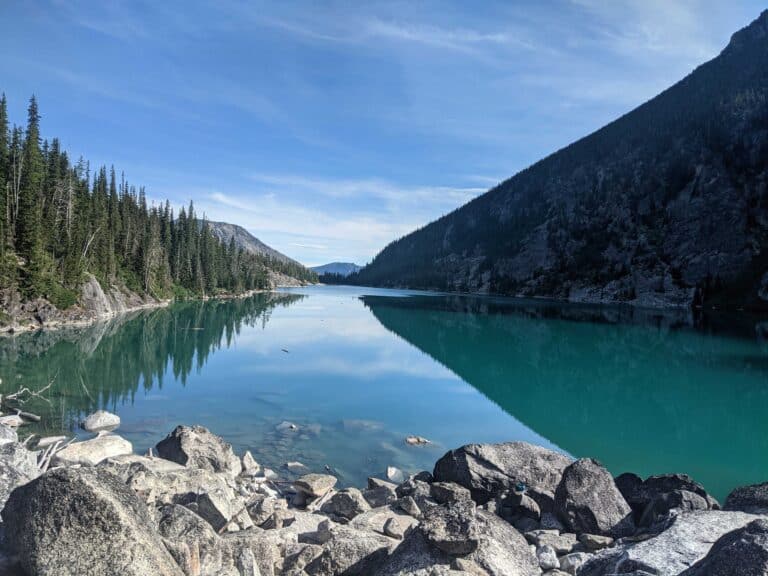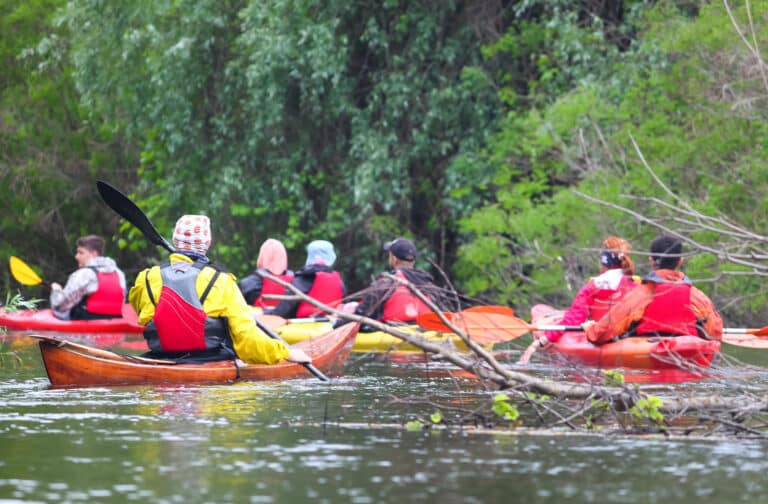7 Best Paved Hiking Trails In Oregon
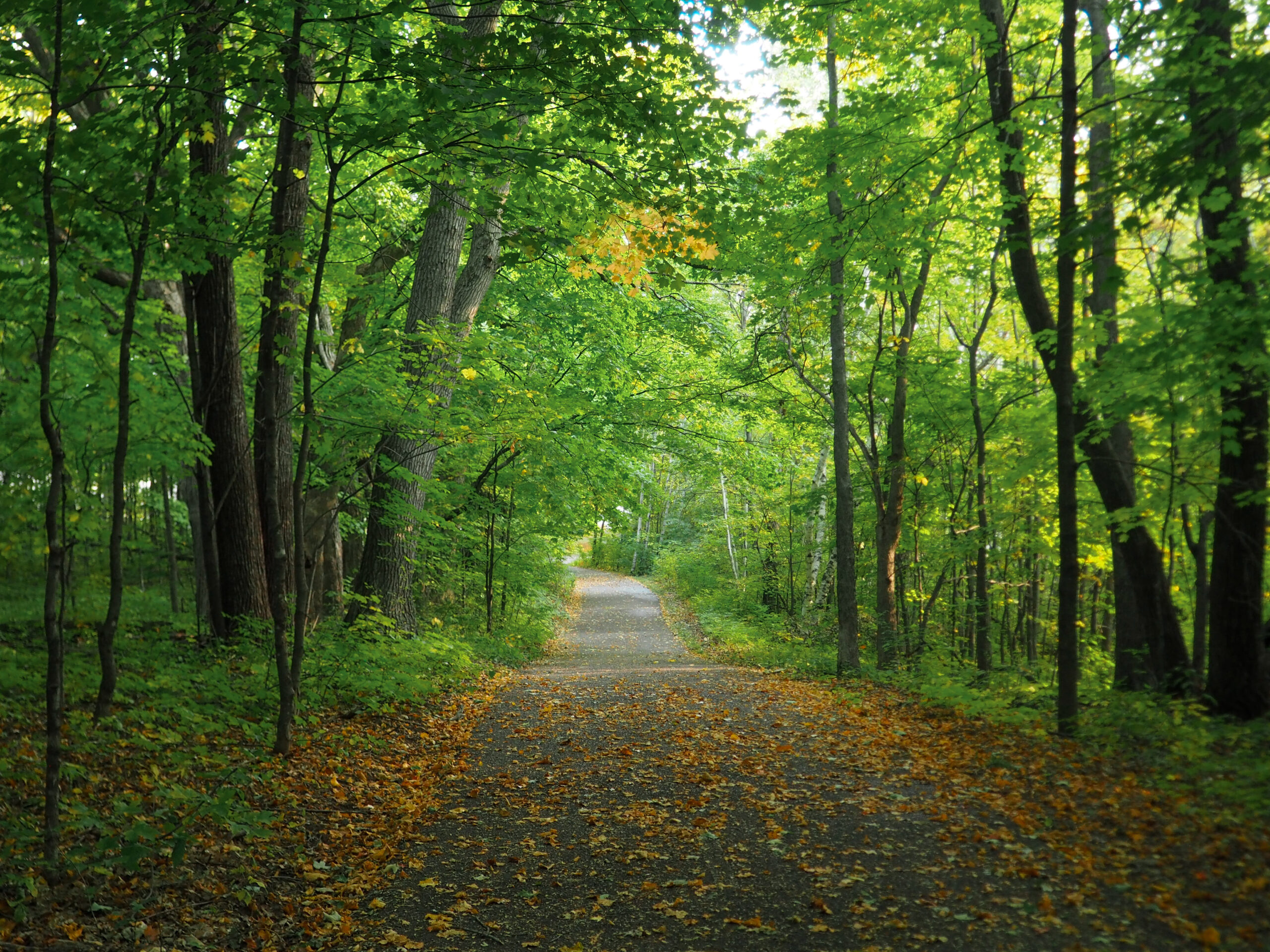
Our content may include affiliate links, through which we earn a small commission on purchases. Want to learn more about us? Read here.
With its varied landscapes from coastlines to mountains. Oregon offers an array of paved hiking trails suitable for all, from casual walkers to nature enthusiasts. These accessible paths allow users to explore the state’s natural beauty at their own pace, enhancing well-being and adventure.
The best trails vary by individual preference, ranging from peaceful forest walks to routes offering expansive views. We highlight seven notable trails for their stunning scenery, accessibility, and unique experiences.
These trails, from urban walks in Portland to secluded natural paths, showcase Oregon’s rich natural and cultural heritage. Inviting explorers of every level to discover the state’s wonders. This guide aims to inspire your next outdoor journey in one of the most scenic U.S. states. Whether you’re after a gentle stroll or a more challenging hike, any of these trails will satisfy you.
1. Banks-Vernonia State Trail
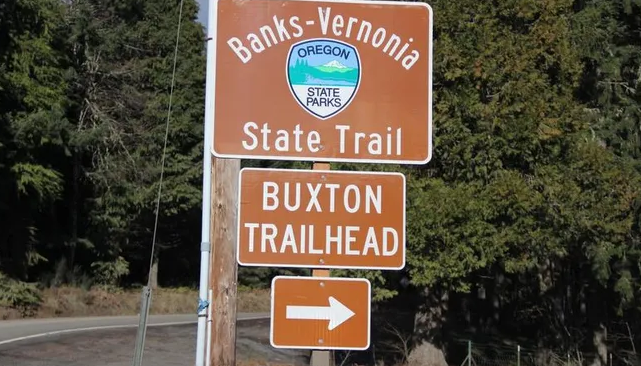
The Banks-Vernonia State Trail, a pioneering project in Oregon, marked the state’s first foray into converting a disused railway into a multi-use path. Spanning 21 miles, this trail offers an immersive experience as it cuts through the lush forests and open fields that typify Oregon’s landscape.
The trail connects the quaint towns of Banks and Vernonia. Providing a peaceful escape into nature for cyclists, hikers, and horseback riders alike. Along the way, visitors encounter wooden trestle bridges, including the Buxton Trestle, which offer panoramic views of the surrounding wilderness.
This trail is a testament to Oregon’s commitment to preserving its natural beauty and historical heritage. Making it a cherished route for outdoor enthusiasts.
Getting There:
To access the Banks-Vernonia State Trail, start from the Banks trailhead located at the intersection of NW Sellers Rd and NW Banks Rd in the small town of Banks, Oregon. This location is about 26 miles west of Portland and easily reachable by taking US-26 W and OR-6 W to Banks. Parking is available at the trailhead, providing convenient access to the trail’s northern end.
2. Ruth Bascom Riverbank Trail System
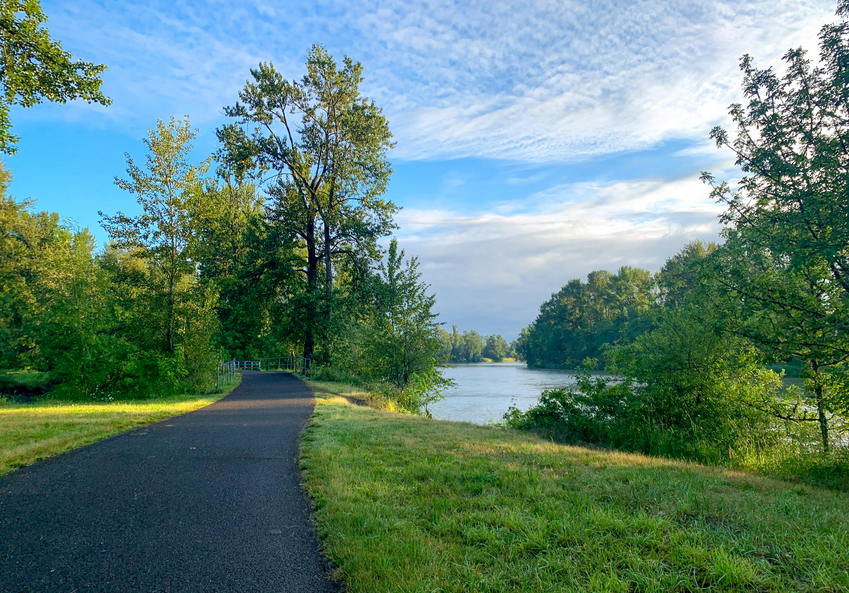
The Ruth Bascom Riverbank Trail System serves as a vital green artery, linking the communities of Eugene and Springfield with nearly 20 miles of paved pathways. Hugging the banks of the Willamette River, this trail network weaves through parks and natural spaces. Facilitating a seamless connection between urban environments and the tranquility of nature.
It’s named in honor of Ruth Bascom, Eugene’s first female mayor and a staunch advocate for pedestrian and cycling paths. The system caters to various recreational activities, from leisurely walks to vigorous cycling, ensuring accessibility for all ages and abilities.
Its comprehensive network of loops and connections enhances the area’s livability and provides a scenic platform for outdoor adventure.
Getting There:
The Ruth Bascom Riverbank Trail System spans multiple access points in Eugene and Springfield. A popular starting point is Alton Baker Park, located on the north side of the Willamette River, accessible via the Coburg Road exit from I-105/I-5. Parking and facilities are available at the park, making it a convenient gateway to explore the trail system.
3. Deschutes River Railbed Trail
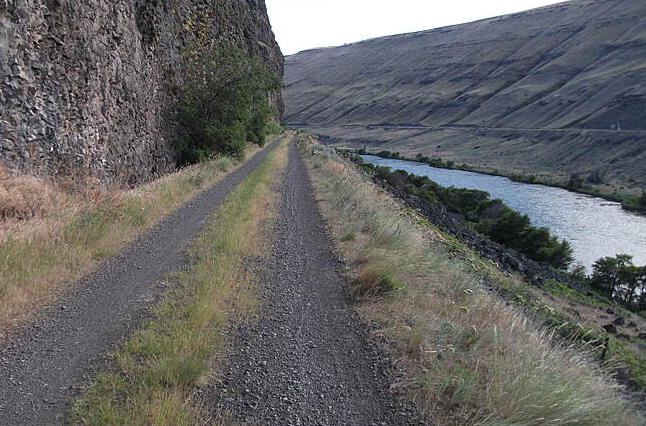
The Deschutes River Railbed Trail offers an unparalleled outdoor experience as it follows the course of the Lower Deschutes River through a striking canyon landscape. This trail, ideal for hiking, mountain biking, and fishing, showcases the rugged beauty of Oregon’s high desert.
Its path allows for intimate views of the river’s wild rapids and calm pools, supporting a rich biodiversity that includes various bird species and wildlife. The trail’s remote setting promises an adventure away from the crowds, where the serenity of nature prevails.
It embodies the spirit of the wild, inviting visitors to explore the scenic wonders of the Deschutes River at their own pace.
Getting There:
To reach the Deschutes River Railbed Trail, head to the Lower Deschutes Wild and Scenic River area near Maupin, Oregon. Access is typically gained from the Deschutes River Access Road, which can be reached via US-197, south of The Dalles. Specific trailheads near Harpham Flat or the Deschutes River State Recreation Area offer parking and direct trail access.
4. Springwater Corridor
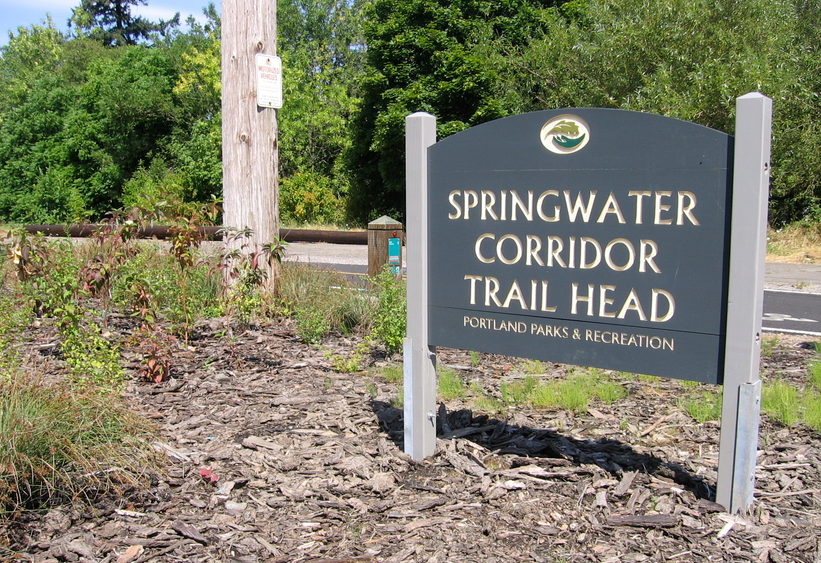
Linking the bustling city of Portland to the serene town of Boring, the Springwater Corridor stretches 21.5 miles, offering a diverse blend of urban and rural vistas. This family-friendly trail is part of the larger 40-mile Loop system, providing an important commuting route and a recreational space.
Along the way, users can enjoy views of Mount Hood, pass through wetlands, forests, and fields, and connect to various local parks and natural areas. The trail’s paved surface makes it accessible for bikers, walkers, and skaters. Emphasizing the community’s commitment to sustainable transportation and active living.
Sidenote: Portland is experiencing a surge in homelessness camps along certain trail stretches. Please be aware of your surroundings at all times, and if you see something, say something to the appropriate authorities.
Getting There:
The Springwater Corridor can be accessed from multiple points from Portland to Boring. A common starting point is the trailhead at SE Ivon St near SE 4th Ave in Portland, offering easy access from downtown Portland. This urban trail is accessible via several city parks and connects to public transit. Thus making it highly accessible for locals and visitors alike.
5. Row River Trail
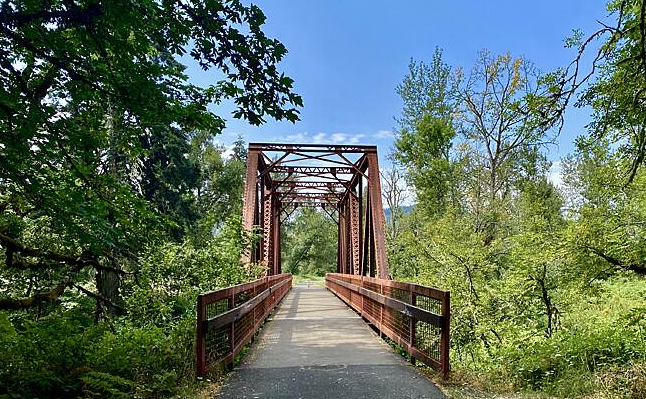
The Row River Trail, a 14-mile journey near Cottage Grove, invites visitors to explore Oregon’s verdant countryside, with covered bridges and rich historical sites. Following a former railroad line, the trail meanders through forests, prairies, and farmland, offering a glimpse into the region’s natural and cultural heritage.
Highlights include passing through the setting of classic films and the opportunity to visit several of Oregon’s famed covered bridges. It’s a perfect backdrop for a leisurely bike ride, hike, or even a horseback ride, embodying the peaceful essence of rural Oregon.
Getting There:
The main trailhead for the Row River Trail is in Cottage Grove, at the Row River Trail parking area off of Row River Road. From I-5, take exit 174 and head east through Cottage Grove, following signs for the Row River Trail. This trailhead provides ample parking and is an excellent starting point for exploring the trail’s scenic route.
6. Astoria Riverwalk
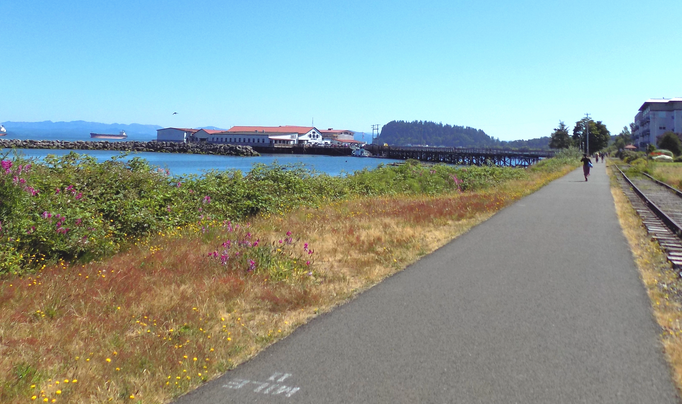
The Riverwalk uniquely blends natural beauty and historical exploration along the 6.4-mile waterfront trail. Situated near the mouth of the Columbia River, it offers visitors a chance to witness maritime activities up close, including the sights and sounds of sea lions and migratory birds.
The trail passes through Astoria’s charming downtown, allowing easy access to museums, shops, and restaurants. Highlights include views of the iconic Astoria-Megler Bridge and remnants of the city’s rich history, making it a vibrant path for discovery and leisure.
Getting There:
To access the Astoria Riverwalk, begin at the east end of the trail near the Port of Astoria, which can be easily reached by taking US-30 to Astoria. Parking is available near the Maritime Memorial Park, a good starting point. Additionally, the Riverwalk can be accessed downtown, where public parking lots and street parking offer convenient options.
7. Vera Katz Eastbank Esplanade
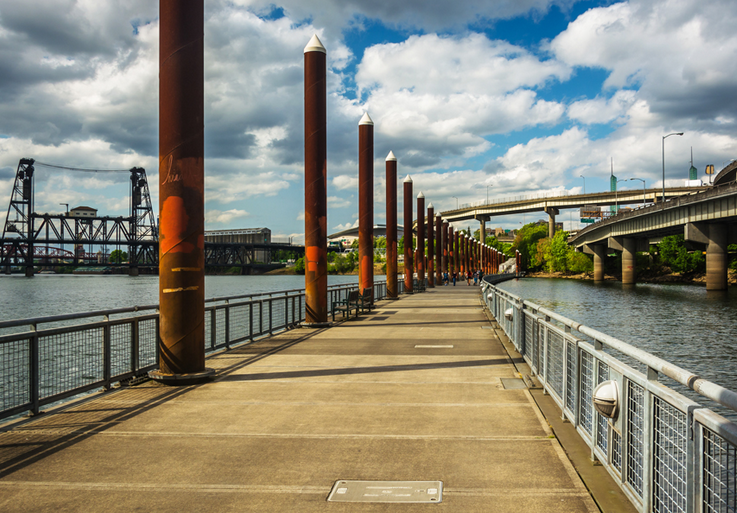
Less than 2 miles in length, the Vera Katz Eastbank Esplanade is a pivotal piece of Portland’s urban trail system, providing breathtaking views of the city skyline along the Willamette River.
Named after Portland’s former mayor, Vera Katz, the esplanade is a floating walkway that exemplifies innovative urban design and sustainability. It connects to several other trails and bridges, including the famous Hawthorne Bridge, allowing for extended exploration of Portland’s waterfront.
The path is a hub for pedestrians and cyclists alike, offering a unique city perspective and fostering a strong sense of community and outdoor engagement.
Sidenote: Portland is experiencing a surge in homelessness camps along certain trail stretches. Please be aware of your surroundings at all times, and if you see something, say something to the appropriate authorities.
Getting There:
The Vera Katz Eastbank Esplanade is located along the Willamette River in Portland, Oregon. A popular access point is at the Hawthorne Bridge, on the east side of the river. Cross the Hawthorne Bridge from downtown Portland and look for the trail entrances off the bridge. Public parking is available along SE Water Ave and nearby parking garages, making exploring this iconic waterfront path easy.
Conclusion
Oregon’s trails weave through its varied landscapes, offering everything from urban cultural experiences to serene natural escapes. Each path, whether the historical Astoria Riverwalk or the forested Banks-Vernonia State Trail, offers unique adventures. Beyond mere exercise routes, these trails are gateways to experiencing the state’s ecological diversity, cultural richness, and historical depth.
Highlights like the peaceful Ruth Bascom Riverbank Trail System and the vibrant Vera Katz Eastbank Esplanade illustrate the stories embedded in Oregon’s terrain. Trails like the rugged Deschutes River Railbed Trail or the picturesque Row River Trail near Cottage Grove exemplify the state’s natural allure.
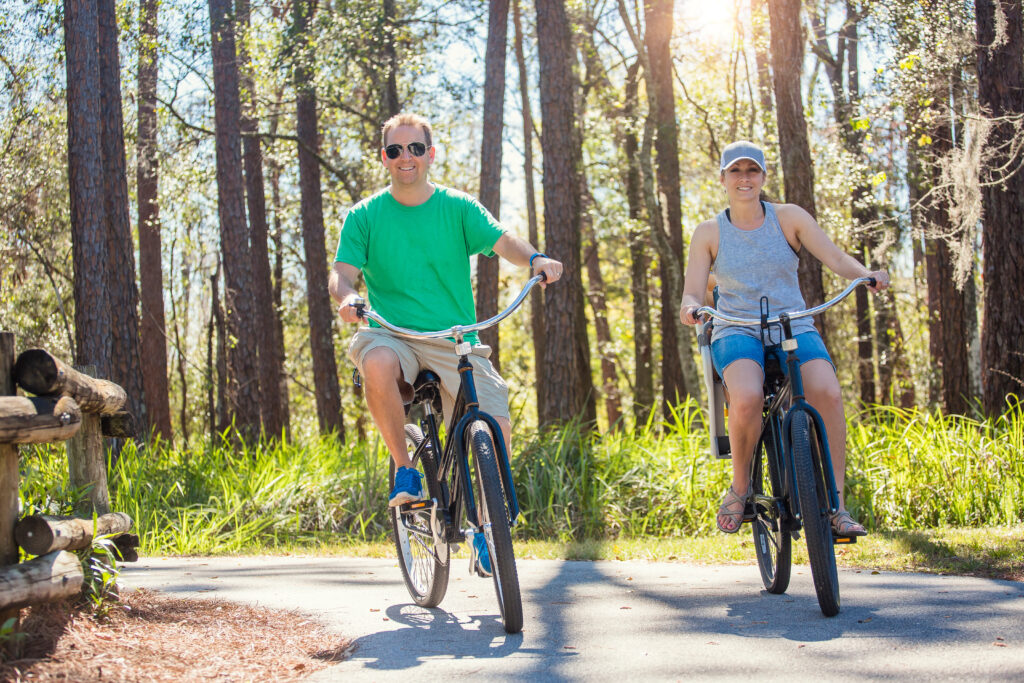
Oregon’s paved paths are designed to cater to a wide range of interests and fitness levels, promising enriching experiences for leisurely strollers and dedicated hikers alike, inviting all to explore the essence of the Pacific Northwest. If you are the type of person who needs to read reviews, check out AllTrials before heading out on the trail.



